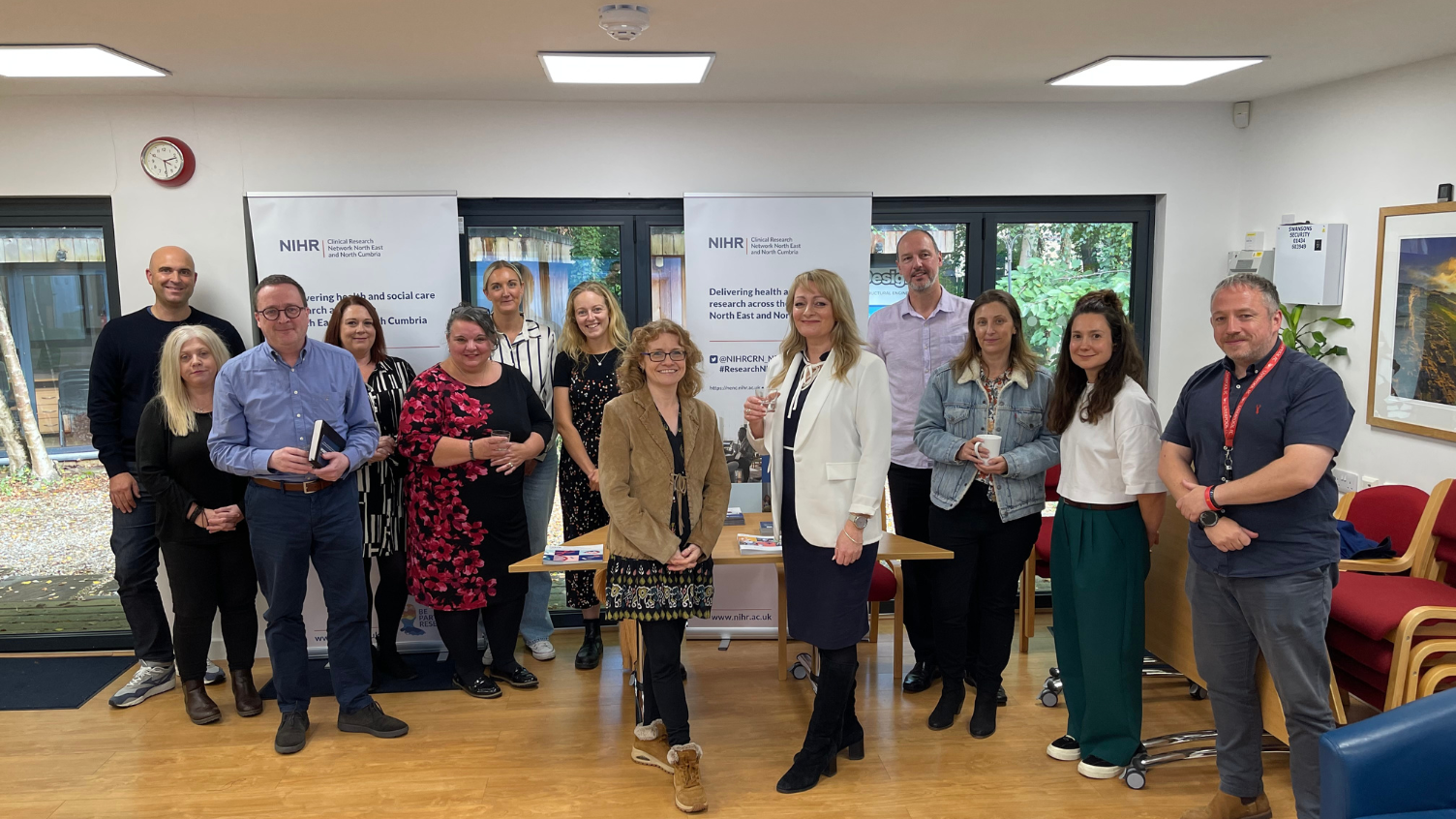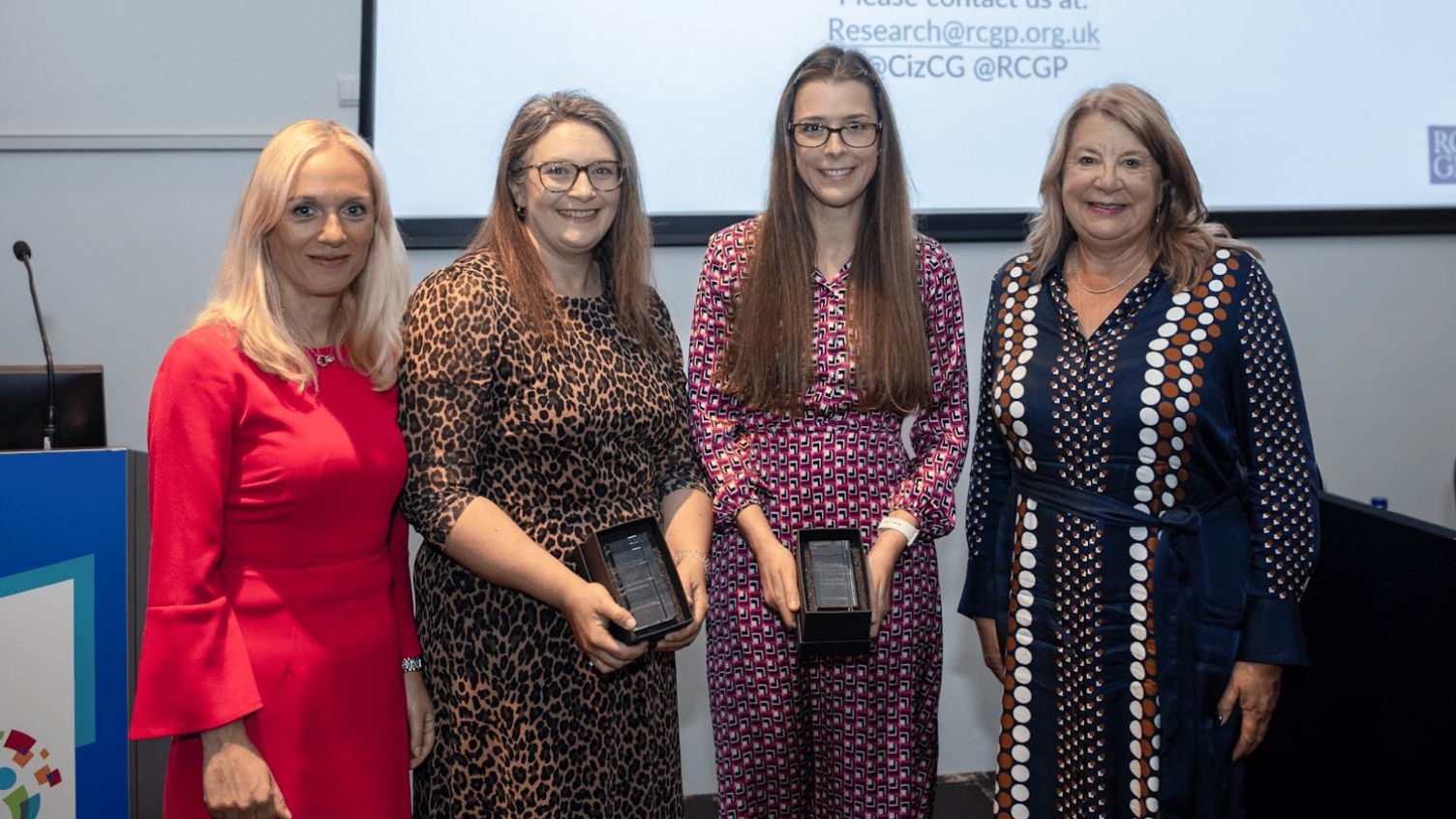Improving Palliative Care for Liver Disease Patients
- 06 August 2024
- 5 min read
End-of-life care is an underdeveloped area of research for manyillnesses. But new approaches can have a big impact on a patients’quality of life and their experience towards the end of their illness.
Research Nurses, Sofia Pires and Faith Panilagao-Bushi (shown above with Principal Investigator, Mark Wright) spoke to us about the work they’re doing on the REDUCe2 study at theUniversity Hospital Southampton, that hopes to improve palliative care for patients with advanced liver disease.
Palliative Care for Liver Cirrhosis
Ascites is an end stage complication of liver cirrhosis. It is a build-up of fluid in a patient’s abdominal cavity that can cause symptoms like pain, nausea, and breathlessness. In its early stages it can be treated with medication, but as the disease progresses treatment options diminish, and palliative care are involved. NICE guidelines advise the ascites can be safely drained up to every one to two weeks in hospital, via large volume paracentesis (LVP) and this is the standard of care we offer currently. LVP is often performed as a palliative care procedure especially if the patient can’t be treated with medication or have any other treatment options such as a shunt or liver transplant.
A typical day for LVP involves the patient to be admitted as a day case in hospital, where the patient would have bloods taken beforehand to check renal function and clotting. The drain is inserted under local anaesthetic by a doctor or advanced nurse practitioner by the bedside and the drain can stay in for up to six hours. The patient would also have an IV infusion of protein (albumin) for every few litres of ascitic fluid removed, which can be up to 10 litres at a time. The patients are usually also very dependent on their care giver to travel to and from hospital. This is a huge time commitment for both the patient and the carer. Sometimes, a patient may phone in themselves to arrange a time to come and have LVP but when they arrive at hospital the level of fluid they have isn’t considered enough to require draining, so they get sent home, which can be hugely disruptive for them.
The aim of the REDUCe 2 study is to understand if a long-term abdominal drain (LTAD), that can stay in for a longer period of time and be drained at home, by a community nurse, is effective andcan improve the patient’s quality of life without any increased risk of infection or complications. If we can prove that the long-term drain is suitable, then it could have a transformational effect on patients’ lives.

Reduce 2 Study
Recruitment for REDUCe 2 in Southampton began in March 2023, and our target is to recruit four patients per year, with four years of recruitment. Each patient is in the trial for three months, but sometimes, due to the high mortality rate of the patients we treat, it can be less. Recruitment for this trial is scheduled to end in 2027. Patients are referred to us via the clinicians in the hospital, and via a cirrhosis multidisciplinary meeting every week where patients with cirrhosis who require palliative care are discussed. We work collaboratively with the advanced nurse practitioners in the hospital who have a designated area for patients with ascites, Same Day Emergency Care (SDEC). We also have an ascites clinic that refers patients into the study. Due to the palliative care nature of the study, it can be difficult to get patients that fully meet the criteria to be eligible for the trial. With end stage liver disease, patients can often be confused and quite vulnerable, so even if they are eligible clinically, we can’t consent them into the trial because we need their full understanding to take part. Our community and research nurses are vital for helping us conduct this trial in the community because some patients can’t attend the hospital. Therefore, the nurses will have to conduct a home visit and take their bloods, do the daily draining if the patient is randomised into the intervention arm of the trial, along with assisting with patient questionnaires and checking for infections. If the patient is randomised into the control arm of the trial, then they are treated in-hospital via LVP as per normal. An important part of this trial will be the financial and economical modelling of this treatment by the team at the University of Sussex, to check it is feasible and worthwhile for the NHS for the long term. Before REDUCe 2, we ran the pilotstudy, REDUCe, here at Southampton, so being able to run REDUCe 2 is a nice continuation and helps us to build on our current provisions for people with ascites, like the SDEC clinic.
Working with Nurses in the Community
Collaboration is crucial for REDUCe 2 to happen. There are currently 24 sites involved in the study (with a target of 35 sites and 310 patients), with the central study team based in Sussex. We have contact with the central team regularly when we have to ask questions about individual patients. The nurse practitioner team regularly refer patients to us, having had initial conversations with them about the study. And the CRN research nurses are the ones going to patients’ homes and performing all the required activities for the study – we couldn’t do it without them. We also coordinate with the interventional radiology team at UHS when the drain needs to be inserted through ultra sound guidance. In addition to this, there is a multidisciplinary weekly cirrhosis meeting so we can talk about patients and their treatment, which helps us hugely with the study because that channel of communication is already there. We need to be aware of all our patients because of the chance the patient will deteriorate quickly. If the study proves successful, then this new approach would grow our collaborative network, with community nurses working much more closely with us and training them for the drain management. We would rely on our community nurses for spotting infections and leading ontreatment, so our collaboration would increase hugely. Ultimately, we want this collaboration to positively impact our patients’ quality of life, and the lives of their care givers.


